

MV: Animality and Femininity have always been melted in my work. Its just a natural/surreal combination I embrace to express ambiguous and stronger feelings (my obsession with Masks for example).
My Muses are as Wild as Delicate, sensual, sultry, sensitive, fragile and provocative. They are Amazones, Nymphs, Hybrids. The Femininity in her whole splendour.
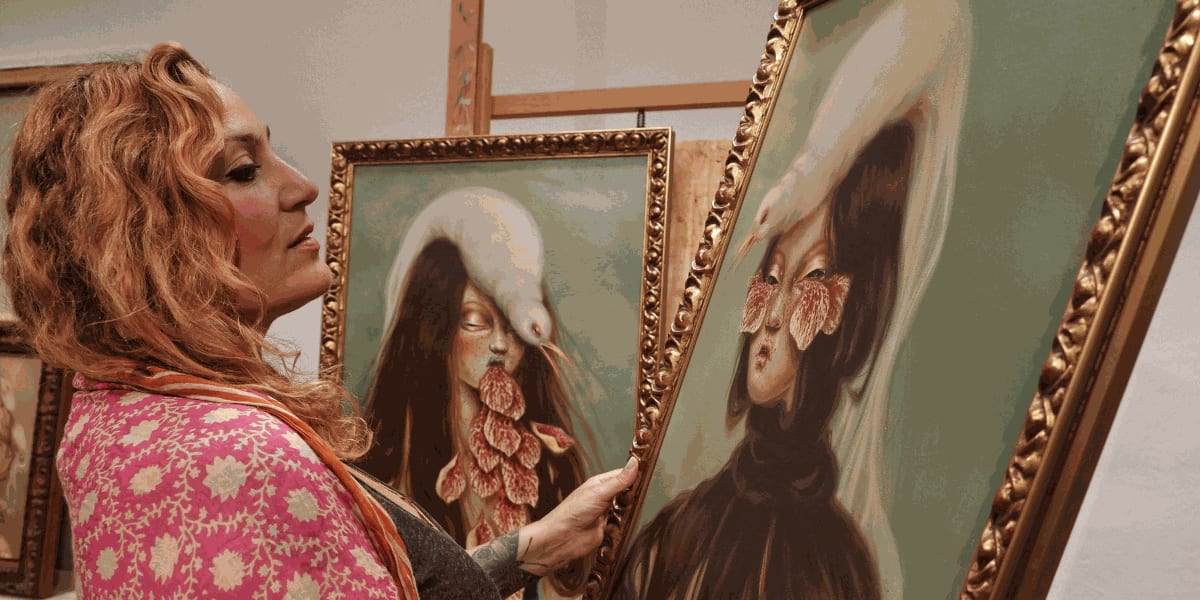
DCG: Your work references a rich tapestry of historical and cultural influences, from vintage erotica to tribal cultures. How do you balance these diverse inspirations to create a coherent visual language that is distinctly 'Miss Van’?"
MV: I mix all my influences together without looking for coherence. I own my freedom in creativity where All is possible and nothing has to be justified. It just has to feel right to me first and it eventually echoes in the viewer’s heart. Also I’m trusting my 30 years of experience and my instinct.

DCG: CREATURAS is the name of your new collection can you tell us what is the idea at the root of this new series and what are the inspirations behind the new works?
MV: This body of works is a natural evolution, they represent simply this moment of time. They are the mirror of my naked deep emotions, my diary in color. They are mostly steady portraits, classical pyramidal compositions.
In these paintingsI’m experimenting the symbiosis between the skin and some organic elements such as insect wings or flowers petals.
I see these textures similar to the flesh: the transparency, the stains, the softness.
I’m interested in their superposition, creating layers, using them as make up, ornaments or clothes. I’m fascinated by their fragility, curves, weightless substance, wrinkles, flow and elegance .
In my paintings in general I tend to use more and more natural artefacts coming from animals and botany, like hairs, leaves, feathers, branches, leather strings, petals etc…
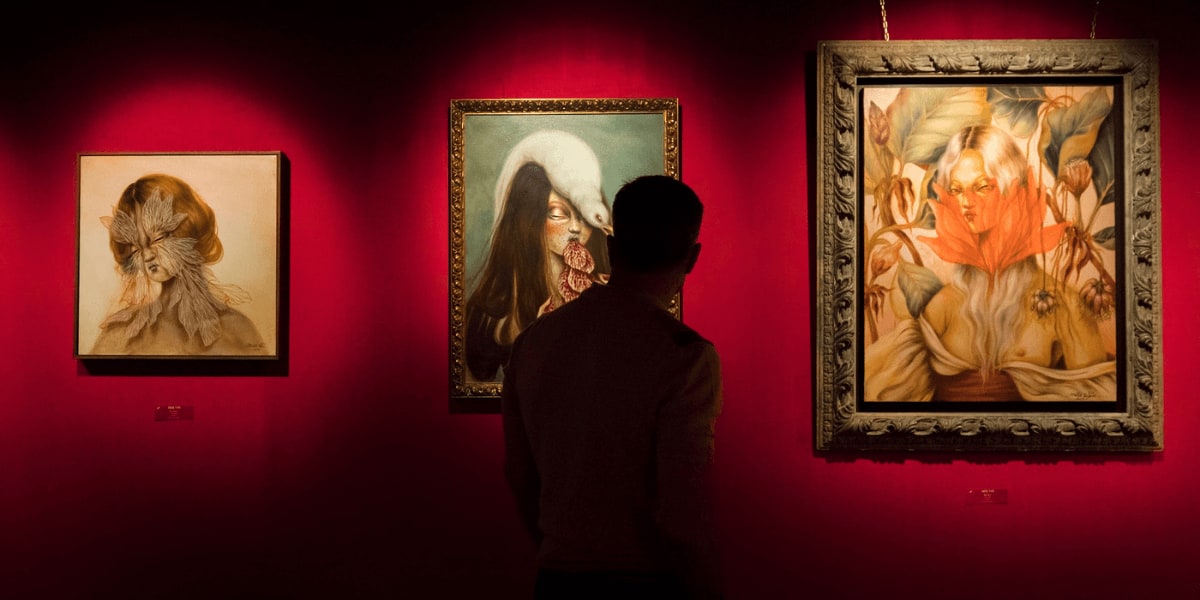
DCG: The portrayal of femininity in your art evolves from sensual and whimsical to mature and assertive. What drives this transformation within your characters, and how does this reflect your own journey as an artist and woman?
MV: For me the key is to stay deeply connected with my art, so I always paint what I am at this particular moment regardless if its appealing or not to others. In this case, I don’t really chose, I let my feelings come out raw and nude. I mostly improvise. It’s very intimate , it’s like being naked in front of the world.
No censorship, no pretending, no faking.
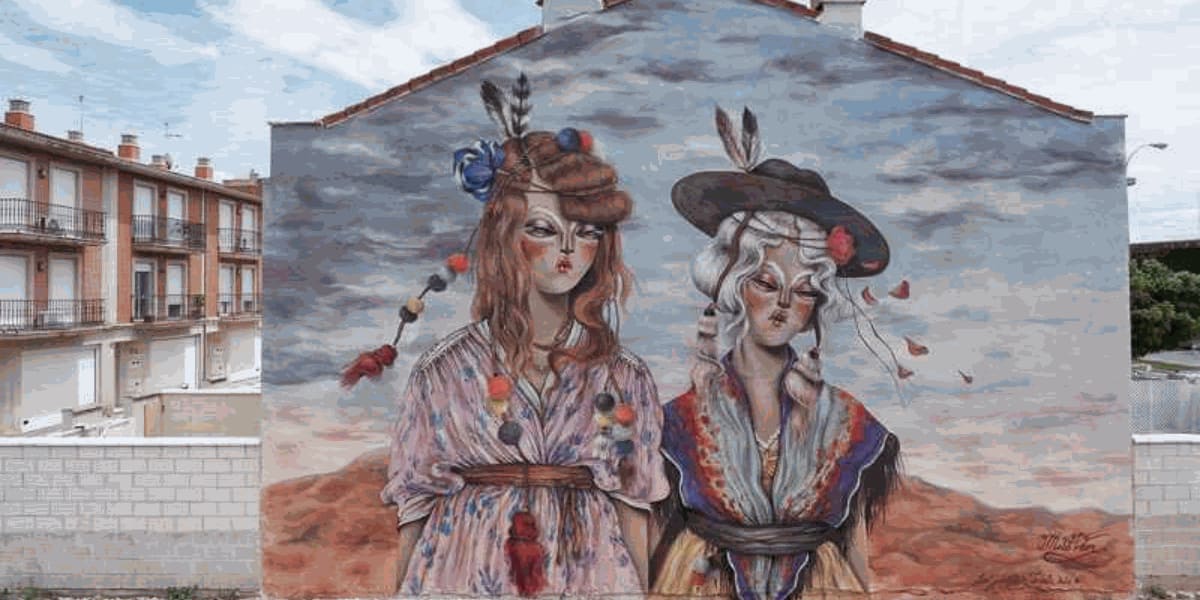
DCG: Seduction and Challenge: There’s an alluring yet challenging quality to the gazes of your muses. What role does this play in your dialogue with the audience, and what reactions are you hoping to provoke?
MV: I’m hoping to create a special connection with the audience, based on emotions, and seduction. Generating fantasies. Provoking feelings, even ambiguous.
I love to hear women recognising themselves in my paintings, and men being seduced or touched. The process of painting my most intimate selfish subjective vision of the femininity, showing it to the world and reaching many hearts is overwhelming and deeply satisfying. It makes me understand the role I’m playing in this life, it justifies my unconditional dedication to Art .
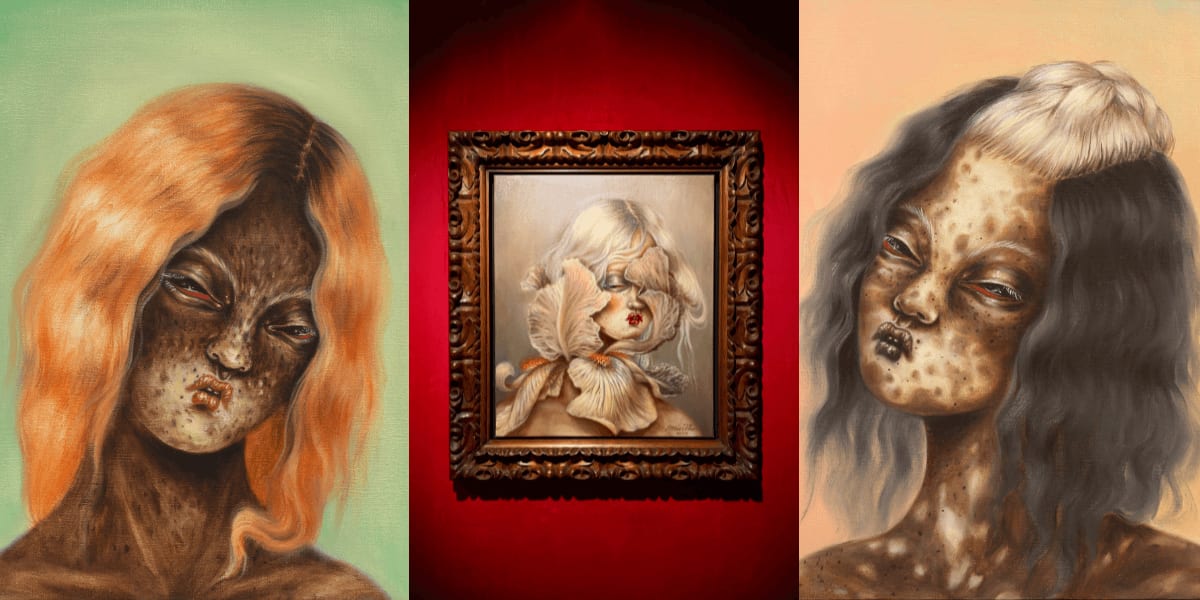
DCG: Your pieces radiate a palpable emotion through a combination of pastel tones and elaborate details. How do you decide on the emotional tone for each piece, and in what ways do the ambivalences of the female condition influence your palette and stroke?
MV: Sometimes I visualise a color palette, or just a dominant color I want to use, or a background color as a start and then I go from there.
I visualise an emotion, an attitude I want to catching. I chose the colours that would fit, I try, I remove, I try different one.
I usually improvise the drawing, sketching directly on the canvas, and I let my flow tell the story.
I don’t always process the same way, I take a canvas as if it was the first time, as if I forgot everything I've done before. I often close my eyes to imagine the painting, an ambience, a movement. I try to picture a blurry idea to start with.
I plant a seed and I let it grow freely, without expectation nor prediction.
I’m realising that after so many years of painting, I need to find some tricks to keep me going, so improvising directly on the canvas allows me to surprise myself.
I love the idea of the unexpected, the unknown, the randomness of the creation.
In this scenario, the painting I am creating today is very different than the one I could create the day before or after. It depends totally on my mood, energy of the moment, inspiration, flow and receptivity.
I enjoy the intensity while painting, constantly doubting, questioning every move. I definitely feel more alive than if I was reproducing a previous detailed sketch. But it's also exhausting.
And then I see the final painting with a fresh vision, I see something that grew freely inside out without rules nor limitations.
I discover the painting when its done, it’s exciting .

DCG: In many of your paintings, there's a suggestion of stories left untold, lingering in the air like the ‘flowery fragrances’ you depict. How important is symbolism in your storytelling, and do you intentionally leave elements open to interpretation?
MV: Painting is an expression that doesn’t requires words.
It has its own language with forms and colours. I paint emotions and some unconscious narratives that have to be felt, not understood. Let’s preserve some Magic & Mystery.
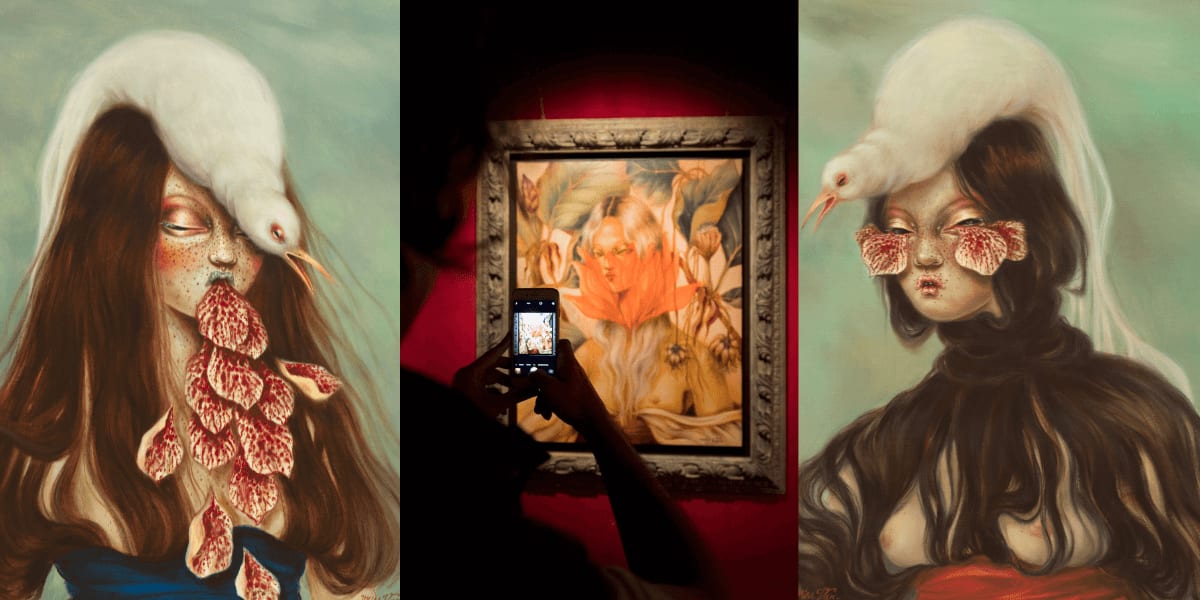
DCG: Having transitioned from the spontaneity of street art to the introspection of fine art painting, how has your relationship with public space and the private canvas influenced the way you approach your art?
MV: Both practices are cohabiting. I miss painting big walls as I do it less often now.
But it’s like my first Love. It’s like dancing with your whole body, making large brush strokes and feeling in immersion with the painting .
Working in the studio is an intimate solitary practice very necessary to grow.
It’s challenging and exciting to go from small paintings to big walls, changing scales with no transition. I also want to go back to the roots and paint smaller walls , human size, as I did for 3 decades.

DCG: In your art, the female figure is central and expressed in various ways. What role does femininity play in your art?
MV: I’ve always painted female figures without asking myself, it's instinctive.
It’s what I know better as a woman, I guess.
DCG: Can you explain your creative process? How do you compose your artworks?
MV: I close my eyes as if I’m half conscious and start to imagine things. I also print a lot of reference photos and often look at them, then I empty my mind and draw whatever comes out. I try to leave room for intuition and randomness .
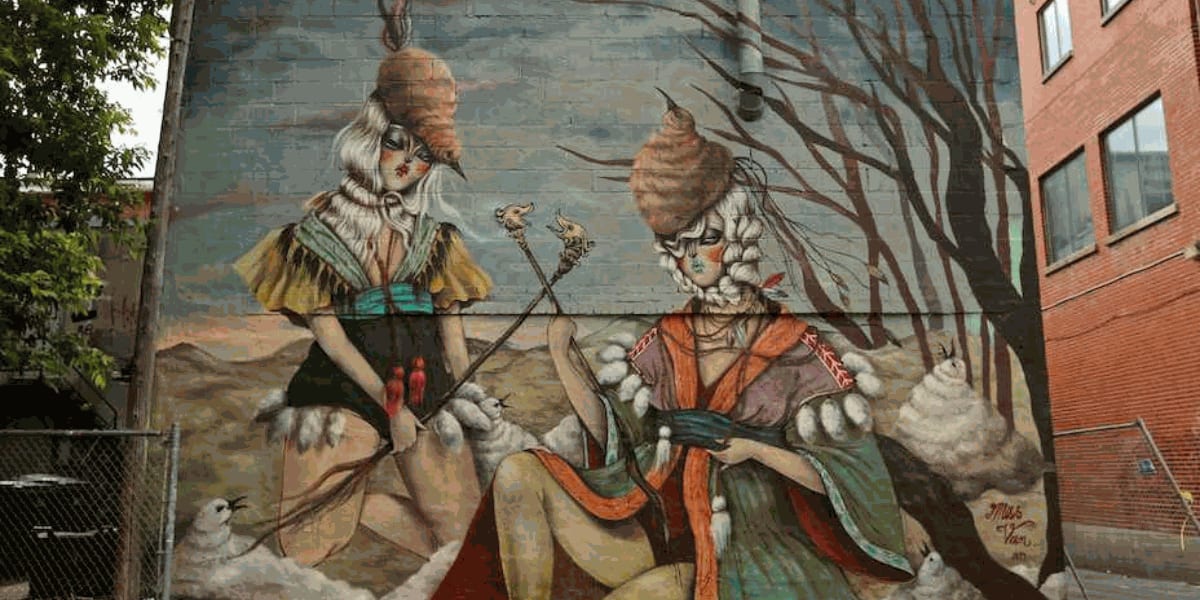
DCG: You're French but have been living in Spain for many years. Do you think your origins and the Spanish environment influence your art? If yes, how?
MV: Probably, but i’m not sure how. I’ve been travelling quite a lot in the past and every travel is inspiring. What makes me being me today is the mix of cultures, the several languages I've learned. I can say that now I’m more inspired by nature, hand crafts and folklore communities . Thats how I would like to focus my travels.
I feel at home in Barcelona but escaping from time to time is physically and spiritually necessary.

DCG: Some of your characters look grotesque and show unsettling features and seem to aim at provoking a strong reaction in the viewer. What's the idea behind this?
MV: I’m not so aware of it. I don’t see it in the moment, I see it with the distance, when I look at my work from the past years. Sometimes I’m very surprised or shocked by some paintings I’ve done, as if it wasn’t me.
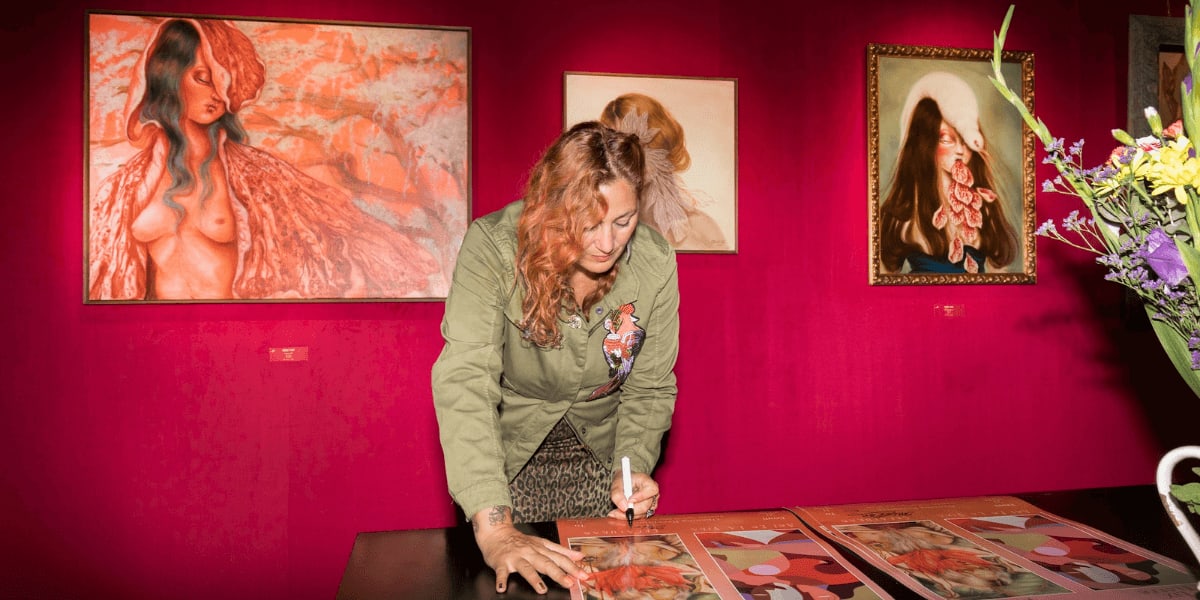
DCG: Is there a primary color in your artistic production? A palette that reflects your artistic vision? How do you choose colours for your artworks, and what does the combination of pigments mean to you in relation to the idea and subject you’re painting? What drives you to give each piece a predominance of one color with just accents of others?
MV: I have some favourite colours such as all range of turquoise green or coral salmon, but I force myself to change the color palette often.
I do have a special affection for vintage colours, I like my paintings to look timeless, not too fresh, recently painted. Also my characters look from another époque, yet very contemporary. I get bored easily if I would use the same color palette for a while. Colours are changing just like feelings.



